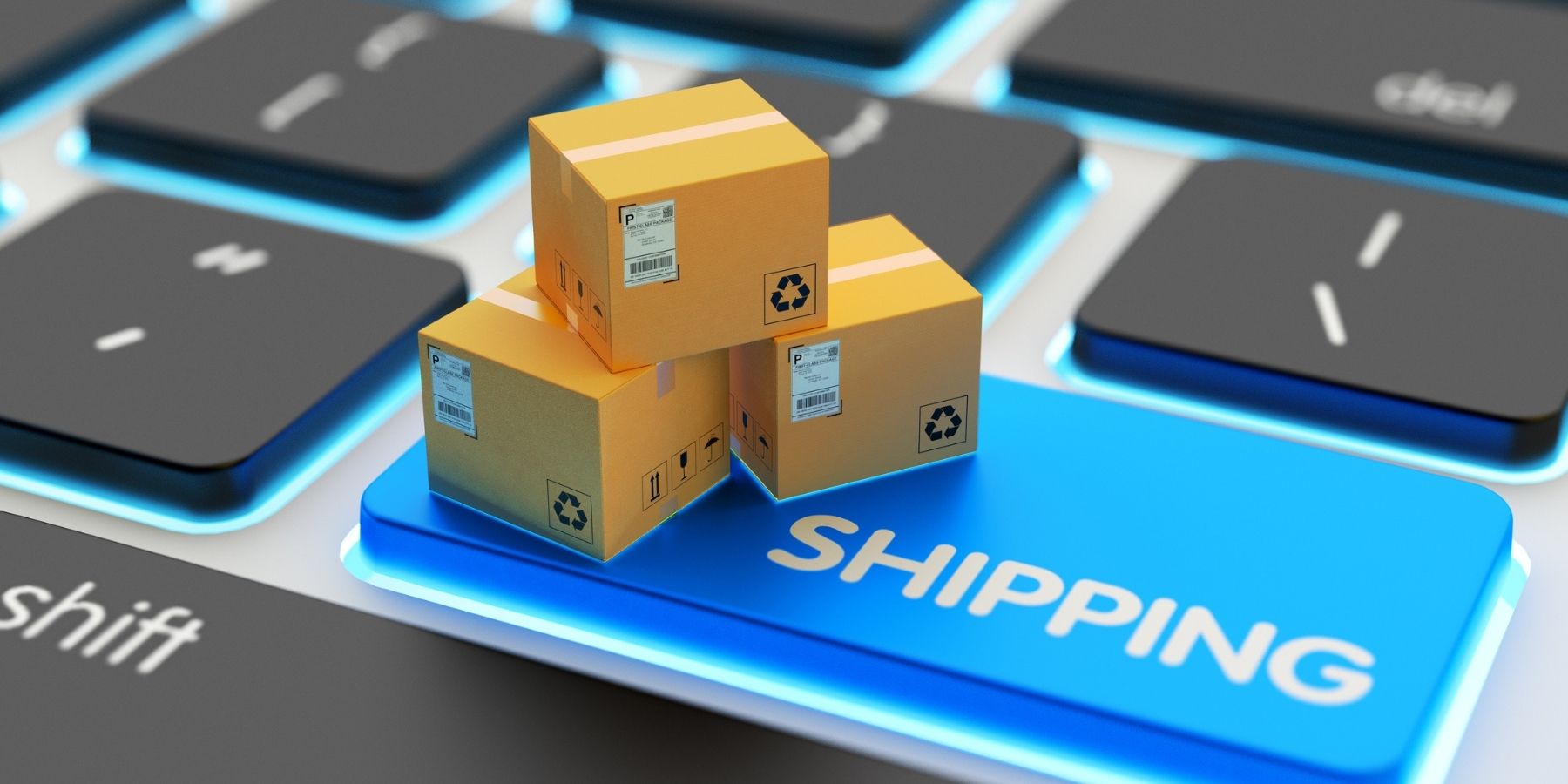ROI from eCommerce Shipping Software Is Now a Board-Level Metric
Shipping used to be a behind-the-scenes task. Now? It’s on the boardroom agenda.
It’s no longer just about getting packages out the door—it’s about owning the full post-click experience. Indeed, with rising delivery costs, labor challenges, and ever-increasing customer expectations, merchants can’t afford to treat shipping like an afterthought.
Instead, shipping has emerged as one of the rare levers in eCommerce that impacts both sides of the profit equation:
- Reducing operational costs through automation and smarter fulfillment
- Accelerating revenue by improving the customer experience at checkout
Here, we’ll break down exactly how a shipping solution benefits, furthermore, how to crunch the ROI numbers, and which best practices deliver a payback in months, not years.
TLDR-
eCommerce shipping software cuts costs and saves time by automating rate shopping, packaging decisions, and tracking. It reduces errors like wrong addresses and helps you ship more with fewer resources. Fewer support calls and faster fulfillment mean more profit with less manual work.
It also boosts revenue by improving checkout, AOV, and loyalty with flexible delivery options. Branded tracking and international tax tools help you expand to global markets with ease. With smart data and shipping automation, most retailers see ROI in just 3-6 months.
Cost Savings Unlocked by Shipping Automation
1. Lower Direct Shipping Costs
One of the clearest wins is trimming the direct shipping costs. Specifically, with real-time multi-carrier rate shopping, you can automatically surface the most affordable carrier/service combination for every cart, without sacrificing delivery reliability.
You also avoid unnecessary surcharges—like residential or oversized fees—by getting packaging and service right the first time.
2. Faster Packing & Fulfillment
Manual fulfillment processes aren’t just slow—they’re expensive. However, with automation, pickers scan a SKU, the system chooses the box, prints the label, and updates the carrier—all in one motion.
Because this flow saves minutes on every order, warehouses can ship hundreds more packages per shift without adding headcount.
3. Returns, Reships & Packaging Waste
Returns happen. But preventable ones—like shipments going to wrong addresses or using incorrect box dimensions—are avoidable with smart rules in place.
The right shipping solution lets you enforce guardrails around address validation, dimensional logic, and shipping group constraints, which directly reduces reships, refunds, and packaging waste.
4. Hidden Opportunity Costs
Ever measured how much time your team spends on “Where’s my order?” tickets?
Accurate tracking info and proactive notifications reduce WISMO calls. Consequently, that’s valuable time (and payroll) you get back, without adding headcount.
Revenue Gains Through Checkout Optimization
1. Higher Checkout Conversion
Here’s what your customers care about at checkout:
- Fast delivery
- Accurate pricing
- Realistic timelines
Shoppers leave when shipping looks expensive or uncertain. Accurate rates, clear delivery dates, and duty estimates build trust.
2. Bigger Average Order Value (AOV)
Want to increase your AOV without discounting?
Shipping rules can surface messages like “Add $15 for free two-day shipping”, and buyers happily toss another item into the cart. These tactics nudge customers to spend more, and your shipping logic enforces it automatically.
3. Repeat Purchase & Loyalty
Shipping doesn’t end at checkout. Branded tracking pages, delivery alerts, and smooth returns also play into customer retention and loyalty.
When customers feel in control and informed post-purchase, they’re more likely to return—and to recommend you.
4. Net-New Market Expansion
Cross-border selling is a goldmine—but only if you solve the last-mile challenges.
A shipping platform with accurate duty and tax calculations at checkout can help your global strategy succeed. Additionally, it enables you to avoid surprises, reduce clearance delays, and deliver to new countries seamlessly.
Strategic Advantages Beyond Cost & Revenue
- Data-Driven Carrier Negotiations: Don’t walk into your annual carrier negotiation blind. Use your shipping data to export zone analysis, weight distribution, and method usage to build your case for discounts or better terms.
- Peak-Season Resilience: During holiday surges or unexpected outages, rules-based logic and carrier fallback options let you reroute around bottlenecks instantly. No more scrambling when a carrier hits capacity mid-December.
- Smarter Inventory Allocation: Optimizing the shipping experience starts with smarter decisions upstream. Moreover, by analyzing order data—like delivery zones, transit times, and service-level performance—you can make more strategic choices about where to position your inventory.
Crunching the Numbers: A Practical ROI Framework
Here’s how to measure the ROI of your investment.
| Step | What to Measure | Typical Impact* |
| Baseline | Cost per orderpick-pack minutescart conversionAOVsupport tickets | 50% increase in conversions 30% increase in AOV 50% reduction in support tickets |
| Savings | Rate-shopping deltaLabor minutes savedSurcharge reduction | 8-15% reduction in freight charges 20-40% reduction in labor costs |
| Revenue Uplift | Conversion lift × AOVRepeat purchases × margin | 5-20% top-line growth |
| ROI/Payback Formula | (Annual savings + incremental gross profit – software cost) ÷ software cost | Payback 3-6 months |
Choosing eCommerce Shipping Software That Maximizes ROI
Not every solution is built for serious ecommerce. If you want fast ROI and long-term growth, your shipping platform needs to do more than print labels—it needs to power strategy at checkout and behind the scenes.
Here’s a checklist tailored to what matters most.
| Must-Have Capabilities | Why It Matters |
| Multi-Carrier Shipping | Access real-time rates from major carriers (UPS, FedEx, USPS, DHL) and regionals—automatically show the best fit per order. |
| Rules-Based Shipping Logic | Offer free shipping by cart value, restrict methods by product type, or enforce blackout dates—without developer help. |
| Flexible Shipping Options | Display accurate delivery dates, pickup locations, and custom method names—turn shipping into a conversion driver. |
| Shipping Analytics & Insights | Analyze shipping costs, zone usage, and surcharges to support smarter carrier negotiations and operational decisions. |
Total Cost of Ownership (TCO)
When comparing solutions, dig deeper than the monthly price tag. Evaluate:
- Pre-Built Integrations: Works seamlessly with platforms like Shopify, Magento, Adobe Commerce, BigCommerce, Salesforce, and your ERP or OMS.
- Onboarding Timeline: How fast can your team get value? Look for guided implementation and training included in your plan.
- Support That Gets It: Is help just an email queue, or a team that understands eCommerce inside out?
Best Practices to Accelerate Payback
Lastly, here are a few steps to help you maximize ROI right from the word go.
- Deploy 80/20 rules first. For example, “Free Ground for orders under five pounds, Zones 1-4.”
- Audit contracts every six months. Your data will reveal if discounts slipped or surcharges crept higher.
- Use return data to improve packaging and reduce waste.
- Share tracking links immediately. Early delivery updates slash WISMO calls by up to 30 percent.
Shipping That Builds Your Bottom Line
Your shipping doesn’t have to be a cost sink. With the right shipping software, it becomes a growth engine. When you combine cost reduction, conversion lift, and strategic advantage, the ROI becomes undeniable.
Ready to make shipping work for you (not against you)?
Put your shipping strategy on autopilot—try ShipperHQ for free.
FAQs on eCommerce Shipping
1. What is eCommerce shipping software, and how is it different from my online store’s built-in shipping tools?
eCommerce shipping software is a standalone, cloud-based platform that connects to multiple carriers, gets live rates, and applies rules (weight, SKU, promo, etc.) before a shopper ever sees a price.
Store-built tools usually show only one carrier or flat rates, which means you miss real-time savings and the flexible checkout options shoppers expect today.
2. How do shipping solutions improve key eCommerce metrics?
Shipping solutions improve various business metrics by tackling two key areas: cost reduction and revenue generation.
On the cost side, it reduces shipping spend, labor hours, and operational errors.
On the revenue side, it boosts checkout conversion, increases AOV through upsell shipping options, and improves customer loyalty with better delivery experiences.
3. Is shipping automation worth the investment for small- and mid-sized businesses?
Absolutely. Even a 500-order-per-month shop spends thousands on shipping and fulfillment. A 5% drop in label costs, a few minutes saved per order, and a modest lift in conversion quickly outweigh a subscription fee.
Plus, automation frees your lean team to focus on growth, not spreadsheets.







